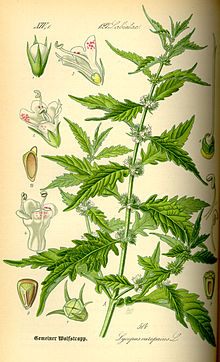
Cryptomeria is a monotypic genus of conifer in the cypress family Cupressaceae, formerly belonging to the family Taxodiaceae. It includes only one species, Cryptomeria japonica. It used to be considered by some to be endemic to Japan, where it is known as Sugi. The tree is called Japanese cedar or Japanese redwood in English. It has been extensively introduced and cultivated for wood production on the Azores.
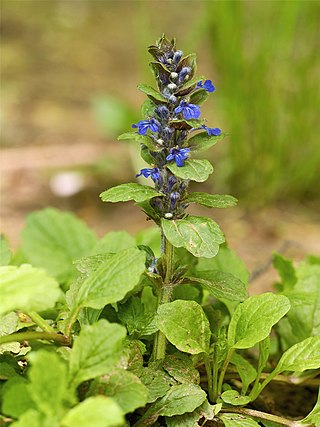
Ajuga, also known as bugleweed, ground pine, carpet bugle, or just bugle, is a genus of flowering plants in the Ajugeae tribe of the mint family Lamiaceae. There are over 60 species of annual or perennial, mostly herbaceous plants. They are native to Europe, Asia, Africa, and Australia.

Alopecurus, or foxtail grass, is a common and widespread genus of plants in the grass family. It is common across temperate and subtropical parts of Eurasia, northern Africa, and the Americas, as well as naturalized in Australia and on various islands.

Adenophora is a genus of flowering plants in the family Campanulaceae, the bellflowers. Plants of this genus are known commonly as ladybells. Most are native to eastern Asia, with a few in Europe. Many are endemic to either China or Siberia.

Valeriana is a genus of flowering plants in the family Caprifoliaceae, members of which may by commonly known as valerians. It contains many species, including the garden valerian, Valeriana officinalis. Species are native to all continents except Antarctica, with centers of diversity in Eurasia and South America.
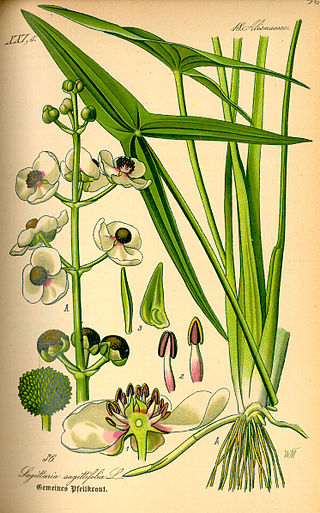
Sagittaria is a genus of about 30 species of aquatic plants whose members go by a variety of common names, including arrowhead, duck potato, katniss, Omodaka, swamp potato, tule potato, and wapato. Most are native to South, Central, and North America, but there are also some from Europe, Africa, and Asia.

Lycopus europaeus, common names gypsywort, gipsywort, bugleweed, European bugleweed and water horehound, is a perennial plant in the genus Lycopus, native to Europe and Asia, and naturalized elsewhere. Another species, Lycopus americanus has also been erroneously called L. europaeus.
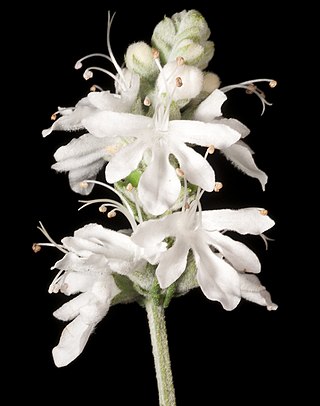
Teucrium is a cosmopolitan genus of flowering plants in the family Lamiaceae, commonly known as germanders. Plants in this genus are perennial herbs or shrubs, with branches that are more or less square in cross-section, leaves arranged in opposite pairs, and flowers arranged in thyrses, the corolla with mostly white to cream-coloured, lobed petals.

Sparganium (bur-reed) is a genus of flowering plants, described as a genus by Linnaeus in 1753. It is widespread in wet areas in temperate regions of both the Northern and Southern Hemispheres. The plants are perennial marsh plants that can grow to 3.5 m, with epicene flowers.

Veratrum is a genus of flowering plants in the family Melanthiaceae. It occurs in damp habitats across much of temperate and subarctic Europe, Asia, and North America.

Meliosma is a genus of flowering plants in the family Sabiaceae, native to tropical to warm temperate regions of southern and eastern Asia and the Americas. It is traditionally considered to contain about 100 species; some botanists take a much more conservative view accepting only 20-25 species as distinct. They are trees or shrubs, growing to 10–45 m tall.
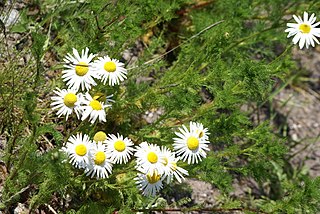
Tripleurospermum is a genus in the chamomile tribe within the sunflower family. Mayweed is a common name for plants in this genus.

Fritillaria camschatcensis is a species of flowering plant native to northeastern Asia and northwestern North America, including northern Oregon, Washington, British Columbia, Alaska, northern Japan, and the Russian Far East. It has many common names, including Kamchatka fritillary and Kamchatka lily.

Neottia is a genus of orchids. The genus now includes the former genus Listera, commonly known as twayblades referring to the single pair of opposite leaves at the base of the flowering stem. The genus is native to temperate, subarctic and arctic regions across most of Europe, northern Asia, and North America, with a few species extending into subtropical regions in the Mediterranean, Indochina, the southeastern United States, etc.
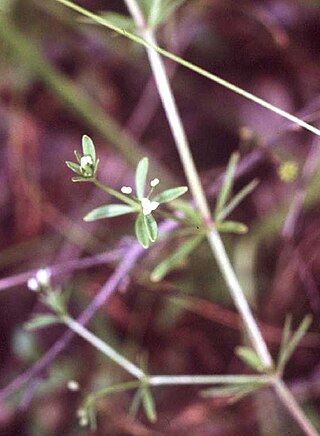
Galium trifidum is a species of flowering plant in the coffee family, known by the common name three-petal bedstraw. It grows widespread in the arctic, temperate and subtropical regions of the Northern Hemisphere: northern and central Asia, northern and eastern Europe and much of North America.

Lycopus uniflorus is a species of flowering plant in the mint family known by the common name northern bugleweed. It is native to much of North America and east Asia
L. europaeus may refer to:

Lycopus virginicus is a species of flowering plant in the mint family known by many common names, including Virginia water horehound, American water hoarhound, sweet bugleweed, water bugle, carpenter's herb, green archangel, purple archangel, wolf foot, and Egyptian's herb. It is native to North America, where it is widespread in eastern Canada and the eastern United States.

Alkekengi officinarum, the bladder cherry, Chinese lantern, Japanese-lantern, strawberry groundcherry, or winter cherry, is a species of flowering plant in the nightshade family Solanaceae. It is a close relative of the new world Calliphysalis carpenteri and a somewhat more distant relative to the members of the Physalis genus. This species is native to the regions covering Southern Europe to South Asia and Northeast Asia.
